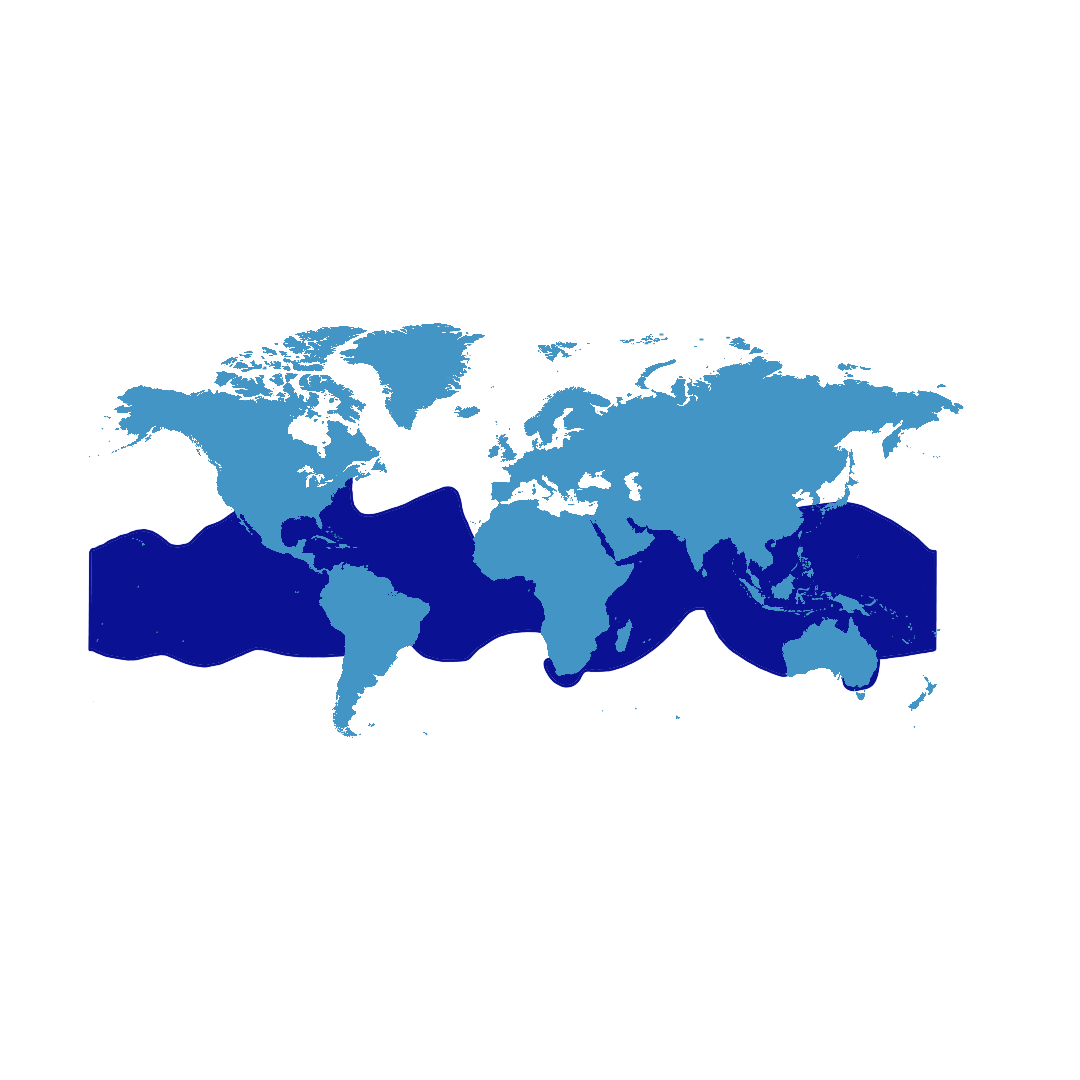WHALE SHARK
Rhincodon typus
The Whale Shark (Rhincodon typus) is the largest fish species, known for its docile nature and filter-feeding habits. It inhabits tropical oceans worldwide, often found near coastal areas and coral reefs. As a migratory species, it plays a vital role in marine ecosystems and is the subject of extensive scientific research and conservation efforts.
IUCN Conservation Status: Endangered
Class Chondrichthyes
Genus Rhincodon
Family Rhincodontidae
Order Orectolobiformes
OVERVIEW
SIZE
Whale Sharks exhibit considerable sexual dimorphism, with males reaching lengths of at least 6 meters and females exceeding 8 meters. Some reports suggest maximum sizes ranging from 17 to 21 meters.
DIET
Whale Sharks are renowned plankton feeders, consuming large volumes through suction feeding and gulping. Their diet consists mainly of planktonic crustaceans, fish eggs, and small shoaling fishes.
BEHAVIOUR
Whale Sharks exhibit highly migratory behaviour, undertaking remarkable journeys of up to 1300km in one direction over extended periods. They congregate at seasonal feeding events, feeding on small fish, invertebrates, and coral spawn.
HABITAT
Whale Sharks inhabit pelagic open oceans, coastal areas, coral reefs, and islands, displaying a preference for surface water temperatures between 21°C to 25°C. They are known to make frequent dives to depths of up to 1928 meters in their oceanic habitat.
BREEDING
Whale Sharks are viviparous, with the only recorded pregnant female found in Taiwan carrying 300 small pups and eggs at different life stages in her uterus. While mating behaviors have been observed, the locations of breeding grounds and gestation periods remain largely unknown to scientists.





